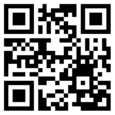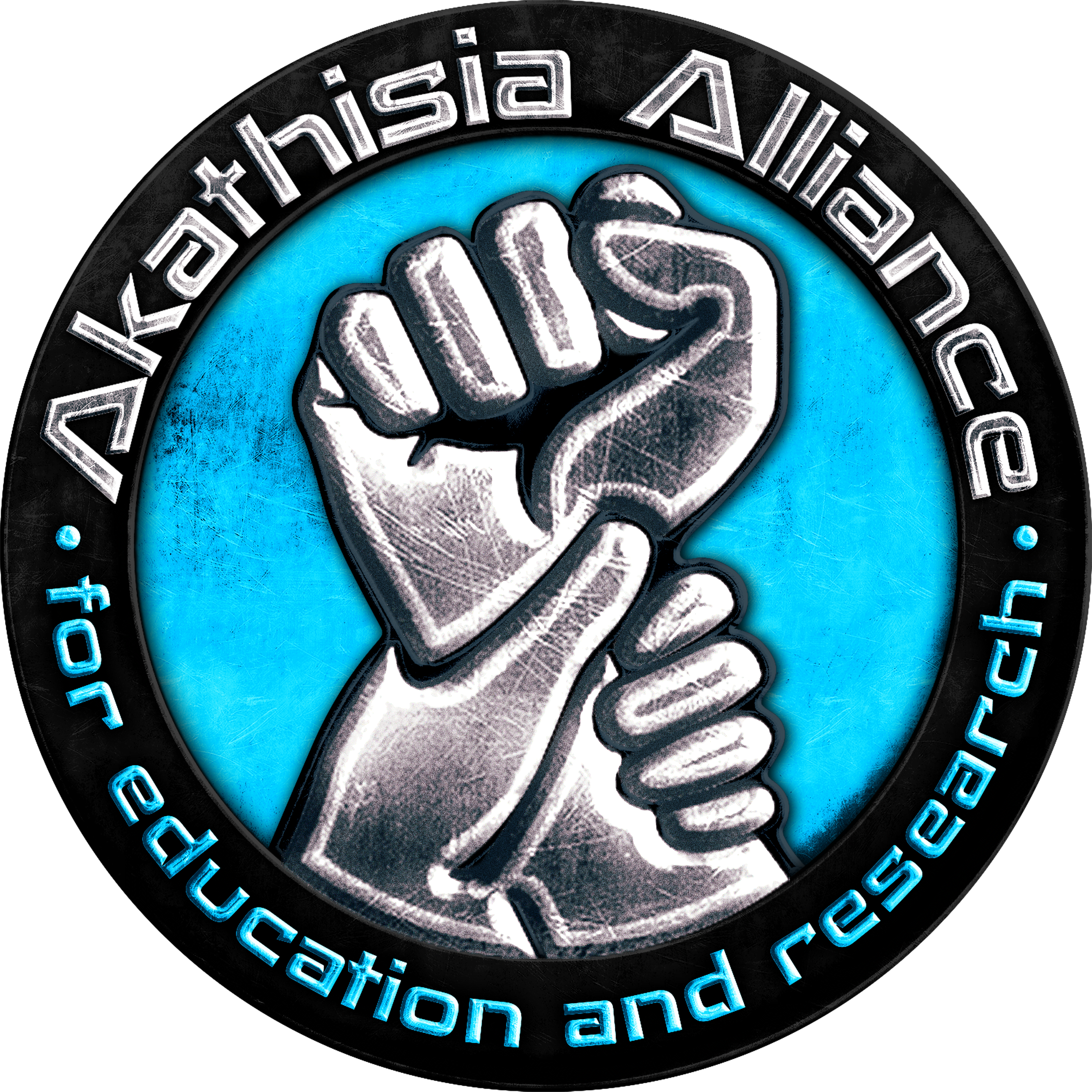
What is akathisia?
Akathisia is an extremely distressing neurological disorder characterized by severe agitation, an inability to remain still, and an overwhelming sense of terror. These symptoms are so tortuous that it can lead to violence and suicide. Akathisia is primarily caused by prescribed medications. The most frequent offenders are antipsychotics, antidepressants, anti-nausea medications, and antibiotics, but it can be caused by many other medications as well. It is also common in benzodiazepine withdrawal (e.g., Ativan, Klonopin), especially after long-term use. It most often occurs when starting, stopping, or changing the dose of a medication, but it can occur at any time during treatment and even months after it is discontinued. Akathisia is far more common than has been reported in the past and remains dangerously under-diagnosed and under-reported today.
Click here or scan this QR code to watch a 38-second video illustration of akathisia:

In this short video, Joseph Glenmullen, MD, explains akathisia and why it can lead to suicide:

Symptoms
The following common symptoms of akathisia have been reported universally (regardless of whether it was caused by long-term use of a psychiatric medication or by one dose of a non-psychiatric medication):
• Intense physical restlessness with a need for constant movement such as pacing, rocking, foot tapping, hand wringing, and shifting position in a chair
• An overwhelming sense of terror, which has also been described as “chemical terror.” This is so pervasive that the person feels as if they are experiencing a terrifying event such as being lit on fire or buried alive.
• A feeling often described as wanting to “jump out of my skin”
• Extreme agitation, impatience, and irritability
• Suicidal and/or violent impulses
• Nonsuicidal self-harm impulses (e.g., hitting, cutting)
• Depersonalization-derealization (feeling disconnected from the body, as if observing it from the outside, or a sense that the world is unreal, similar to living in a dream)
• Separation anxiety/monophobia and agoraphobia (a need to be near safe people and places at all times due to the terror)
• Racing thoughts and pressured speech
• Vocal tics (e.g., throat clearing, grunting)
• Subjective physical sensations such as electrical zaps, buzzing, vibrating, burning, bugs crawling under the skin, etc.
• Hypersensitivity to light and sound
• Executive dysfunction (impulsivity, disorganization, inattention, emotional dysregulation)
Recognizing Akathisia (ICD-10-CM Code G25.71)
Key Points
• Akathisia is a neurological disorder composed of both neurological and psychological symptoms.
• Motor symptoms can be variable, briefly suppressed, increase with attention, and decrease with distraction.
• Motor symptoms may increase with physical and/or psychological distress.
• Excessive movements are not always evident.
• Due to the above-noted motor characteristics, akathisia can easily be misdiagnosed as a functional neurological disorder.
Clinical Assessment (by Perminder Sachdev, MD, PhD, FRANCZP)
There is no consensus regarding which movements, if any, are characteristic of akathisia. In our study, the features that best discriminated akathisia from non-akathisia were i) shifting weight from foot to foot, or walking on the spot, ii) inability to keep legs still (subjectively}, iii) feelings of inner restlessness, and iv) shifting of body position in the chair. However, these features are not present in every patient, and in the milder cases, only the subjective report may be present, at least on brief examination, and only prolonged observation will reveal any motor disorder. Voluntary movements and effortful tasks tend to reduce the movements. The majority of the patients report that akathisic movements are voluntary and in response to subjective distress.
Except for the most severe cases, patients are able to voluntarily suppress the movements at least for short periods. Another feature of the movements is their marked variability over time, and their usual disappearance during sleep. Tremor of the extremities is not uncommonly associated, and this may be regarded as the co-occurrence of drug-induced parkinsonism.
Misdiagnosis and Suicidality
Akathisia is not subtle. Its symptoms are so severe, in fact, that there are many reports of people with no history of mental illness or depression who took their lives within days of its onset. The importance of an accurate and swift diagnosis cannot be stressed enough. As the suicidality is primarily due to its subjective symptoms, it is crucial to consider a self-diagnosis – even when a patient exhibits no objective signs. Failure to do so and an alternate misdiagnosis are currently resulting in unnecessary involuntary hospitalizations, forced drugging with medications that worsen the akathisia, loss of family support, abandonment, homelessness, and a much greater risk of suicide.
Common Misdiagnoses: Worsening of a mental illness, new mental illness, generalized anxiety disorder, panic disorder, personality disorder, bipolar disorder, attention-deficit/hyperactivity disorder, restless legs syndrome, health anxiety
Functional neurological, somatic symptom, and factitious disorders: Patients with symptoms severe enough to cause suicidality may easily meet the criteria for these disorders until they find a doctor who recognizes their akathisia. They will appear to have disproportionate and persistent thoughts about the seriousness of their symptoms, have a persistently high level of anxiety about their symptoms, and spend excessive time devoted to these symptoms. They will do their own research, know the correct medical terms, be eager to have numerous tests performed, and have a history of visiting many doctors and hospitals in search of an accurate diagnosis.
Drug-Seeking: Akathisia is very common in benzodiazepine withdrawal, especially if prescribed long term. It can also occur with tolerance and between doses. To these patients, even one missed dose can cause significant worsening. Due to the increased suicidality, they know they may not survive a cold-turkey withdrawal. They are not drug-seeking to get high. They simply need their prescription renewed so they can taper at a rate slow enough to prevent a return of the akathisia.
This video (1 min, 51 sec) illustrates the harm being caused by abrupt cessation of benzodiazepines:

Treating Akathisia
Pharmacological treatment of akathisia is extremely difficult because a medication that helps one patient may harm another. Please consult literature, such as “The Clinical Challenges of Akathisia,” for suggested treatment options, and also keep in mind that anecdotal reports among thousands of support group members suggest slow tapering of psychotropic medications and subsequent abstinence may be the most effective long-term treatment.
Note: Threatening to restrain and/or force drug patients exhibiting signs of akathisia, including self-harm, could significantly worsen their condition. Using a calm tone to assure them they are safe may de-escalate the situation and be much more effective.
Medications that can cause or worsen akathisia and suicidality
The medications that most commonly cause or exacerbate akathisia are listed below, including all antipsychotics and antiemetics that deplete dopamine as well as most classes of antidepressants as they can indirectly do this as well.
Although low-dose mirtazapine is often listed as a potential treatment for akathisia, it is included because there are several published cases of mirtazapine-induced akathisia.
As there are published cases of akathisia induced by calcium channel blockers, certain antibiotics (fluoroquinolones, macrolides, and tetracyclines), lithium, gabapentin, and pregabalin, they are also included.

This guide was created by the Akathisia Alliance for Education and Research, a 501(c)(3), tax-exempt, nonprofit organization.
